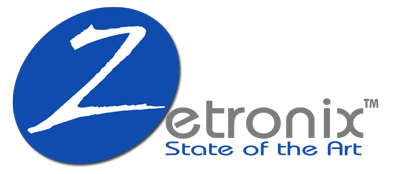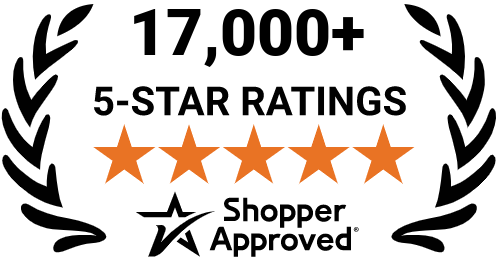Security Camera Installation Cost: How Much Does It Cost to Install?

Installing a security camera is one of the best ways to protect your homes and businesses. But before you start investing, you need to understand the security camera installation costs to make sure it fits your budget.
So, how much does it cost to install security cameras?
Well, the answer depends on several factors, including the type of cameras, the complexity of installation, and whether you hire a professional or do it yourself.
In this guide, we'll explain everything you need to know about the cost of home security camera installation so you can make an informed decision.
30 Seconds Summary
- The cost of installing security cameras depends on many factors, such as the type of camera, the number needed, and where they are placed.
- Wired cameras are cheaper but more complicated to install, while wireless ones cost more but are easier to set up.
- Extra features like night vision, sound, and motion alerts make cameras more helpful but also raise the price.
- You can install cameras or hire a professional; DIY saves money, but professionals work better.
- Be ready for hidden costs like storage, wires, permits, and repairs.
Factors That Affect Security Camera Installation Cost
Plenty of factors affect the cost of installing security cameras. Here are a few:
Type of Security Cameras
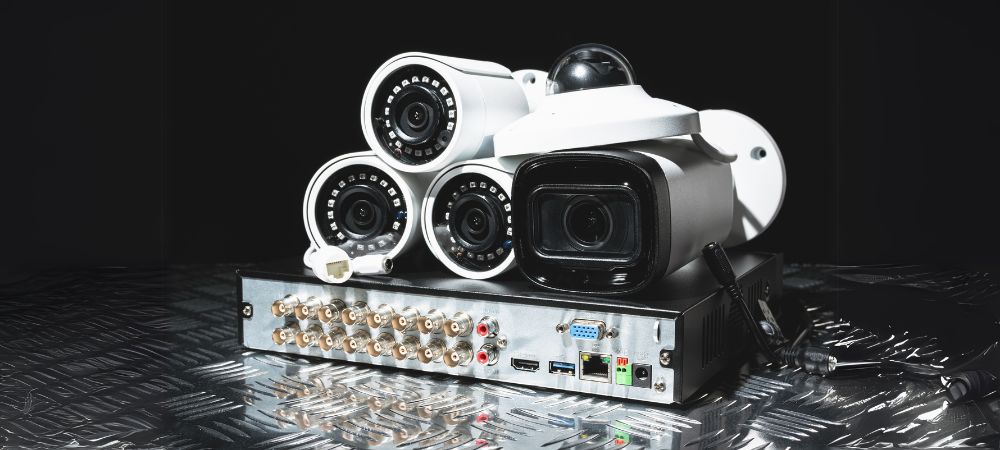
Security cameras come in different types; the type of camera you choose can significantly determine the costs. Here are some of the common types of surveillance cameras out there:
Camera Type | Description | Price Range |
Dummy Cameras | They look like actual surveillance units but do not capture any footage; these are only used for deterrence. | $10 – $15 |
Box Cameras | These are rectangular units that are typically mounted outdoors for visible coverage. | $20 – $100 |
Dome Cameras | These cameras are usually mounted on ceilings; they blend in easily and cover wide angles. | $80 – $100 |
Bullet Cameras | These cameras are sleek and tubular and are ideal for monitoring specific outdoor areas. | $100 |
Hidden Cameras | Hidden cameras are mini-sized and well-concealed and can be used to monitor without drawing attention. | $100 – $150 |
Floodlight Cameras | These cameras come with powerful lights that activate with movement. | $150 – $250 |
Spotlight Cameras | These cameras emit focused light when activity is detected in dark spaces. | $100 – $200 |
Each of these cameras has its own pros and cons, which can impact installation expenses. If you’re looking for smart home security, consider investing in a wireless or solar-powered system from Zetronix.
Number of Cameras
As the number of cameras increases, the total security camera installation cost naturally goes up. Every extra camera adds to equipment expenses and the labor required for setup.
For a standard installation, you spend approximately $200 per camera. However, if you cover a larger property or need more advanced features, that price can rise significantly. Depending on the type and functionality of the system, costs per camera typically range between $100 and $500.
Field of View
The TA camera's field of view is the area it can cover. A camera with a broader field of view can cover a larger area, so you might need fewer cameras to protect your property. This can help you save on the number of cameras you need.
However, cameras with a wide field of view often cost more. These cameras need better lenses and more advanced technology to capture a larger area without losing quality. The price difference for cameras with larger fields of view can vary significantly, impacting your total system cost.
Wired vs. Wireless Systems
When considering wired vs. wireless security cameras, each has its own set of advantages and challenges, which will affect the overall installation cost.
- Wired Systems:
These cameras are usually less expensive. However, the installation process can be more complex and time-consuming because the installer has to run cables through your walls or ceilings. This often means higher labor costs. Additionally, the cost of the wires and any extra hardware, like connectors or power adapters, can add to the overall price.
- Wireless Systems:
Wireless cameras are much easier to install because they don’t require running cables throughout your home. This can save you on labor costs, but the cameras can be more expensive. Wireless cameras typically range from $150 to $300 per camera, depending on their features. While the installation is more straightforward, you will still need a good Wi-Fi signal for reliable operation.
Protect your property with a solar-powered security camera from Zetronix. These cameras offer eco-friendly, reliable surveillance without high energy costs. Explore our selection today, and keep your home safe with our innovative technology!
Labor and Installation Costs
When installing security cameras, you need to hire professional labor unless you opt for a DIY setup. When you hire professionals, you can be sure that your system is installed correctly. The installation cost can vary depending on various factors, such as location, the complexity of the system, and the number of cameras.
- Per Camera Labor Costs:
The average labor cost for installing security cameras is usually $100 or more per camera. This depends on your location, as labor costs can vary from city to city or region. For a system with multiple cameras, the price can add up quickly.
- Full System Installation:
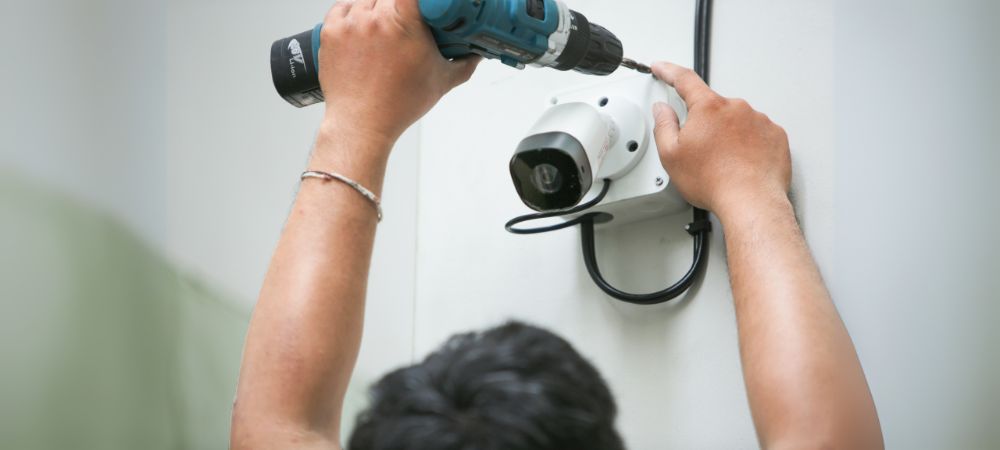
The total labor cost for a standard four-camera system can range from $400 to $800, with more complex systems or special setups pushing the cost higher. The labor cost can increase substantially for larger systems or homes with challenging installation areas (e.g., high ceilings or hard-to-reach outdoor locations).
Camera Location
Where you place your cameras significantly affects the installation cost. Installing a camera at certain locations can be more challenging than others, directly affecting installation cost.
- Indoor vs. Outdoor Cameras:
Cameras that need to be placed outdoors typically have higher installation costs due to the need for additional weatherproofing and mounting hardware. If the cameras are in difficult-to-reach areas, like on tall walls or in high places, the labor costs can rise even more.
- Hard-to-Reach Locations:
Installation costs can increase by $50 to $200 per camera in areas with tall ceilings, garages, or places requiring a special mount., Outdoor cameras also often need special protection against weather conditions, which can increase both the hardware cost and the labor required to complete the job.
Want to set up your security system? Learn how to install a security camera at home here.
Frame Rate
The frame rate of a security camera determines how many frames the camera records (FPS) per second. A higher frame rate means smoother video, which is especially useful when tracking fast-moving objects or people. For example, if someone runs across your property, a camera with a higher frame rate will give you a clearer picture of their movements.
- Standard Cameras:
Most standard security cameras offer frame rates of around 15 to 30 FPS, which are usually sufficient for typical home surveillance needs. However, cameras with a higher FPS tend to cost more due to their better video quality.
- High-Frame Rate Cameras:
Cameras with higher frame rates, such as 60 FPS, can cost between $50 and $300 more than the basic models. While this extra investment provides better-quality video, especially when objects are in motion, it also requires more storage to keep the higher-quality footage. This can increase the overall cost in terms of initial investment and ongoing storage fees.
Storage: Local vs. Cloud
One of the major decisions to make when setting up a security camera system is between local and cloud storage. Both options have benefits and costs.
- Local Storage:
Local storage typically involves using an SD card, DVR, or NVR (Network Video Recorder). Local storage can be more affordable because you only pay for the storage media, which usually costs between $50 and $100 per camera. However, local storage requires more maintenance, especially if you use physical hard drives that need replacing or updating.
- Cloud Storage:
Cloud storage, where footage is saved remotely and accessible from anywhere, is becoming more popular. However, this comes with recurring costs, typically ranging from $10 to $30 per camera monthly. While cloud storage is more convenient for remote access, it requires an ongoing commitment to pay for the storage. FCloud storage might be a better choice for people looking for flexibility and ease of access, though it can add up over time.
Power Source
The power source for your security cameras affects both their placement and the installation cost.
- Wired Power:
Many security cameras are powered by a direct electrical connection, which is simple and reliable. However, running the necessary wires during installation can require more work, which might increase installation costs.
- Battery-Powered Cameras:
Battery-powered cameras are more flexible because they don't need plugged into an electrical outlet. However, they tend to cost more and will need regular battery replacements. Over time, battery replacements can cost between $20andd and $ 100 per camera.
- Power over Ethernet (PoE):
PoE cameras use a single cable to transmit both power and data, which can reduce installation complexity compared to wired systems. However, setting up PoE requires additional equipment, like PoE switches, which can add between $100 and $400 to the total installation cost for multiple cameras.
Extra Features That Affect Security Camera Installation Costs
Infrared (Night Vision)
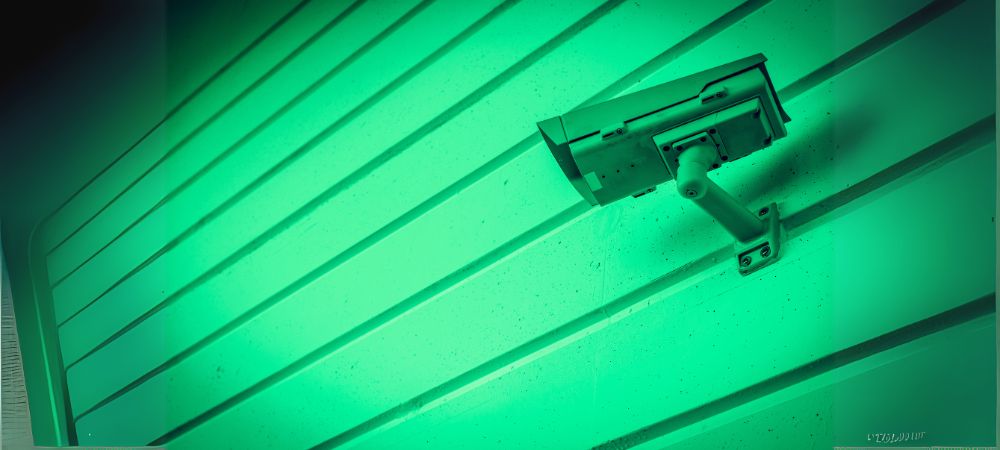
Infrared light helps cameras see in the dark by using special light. This is useful for watching outside or in dark areas, day or night.
Pros:
- Let's record at night
- Good for outdoor security
- Can show things far away, even in darkness
Cons:
- Cameras with night vision cost more
- Lights may attract bugs that block the lens
Built-in Microphone
Some cameras have microphones that record sound along with video. This can help you hear what’s happening, not just see it.
Pros:
- Adds sound to video recordings
- Helps identify voices or noises
- Often included without much extra cost
Cons:
- It may not be allowed everywhere due to privacy rules
- Sound needs more storage space
Motion Detection
This feature tells the camera to record only when something moves. It saves space and sends alerts when there’s action.
Pros:
- Uses less storage
- Sends alerts for movement
- Can be adjusted to ignore small things like pets
Cons:
- Can give false alarms (from pets or shadows)
- Needs settings adjusted to work best
Facial Recognition
This smart tech lets cameras recognize faces. It compares faces it sees to ones saved in memory, which can help with access control and security.
Pros:
- Quickly spots people you know or don’t know
- Can control access to secure places
- A modern, advanced feature
Cons:
- More expensive than basic cameras
- Needs clear views of faces to work
- Raises privacy concerns in some areas
Professional vs. DIY Security Camera Installation
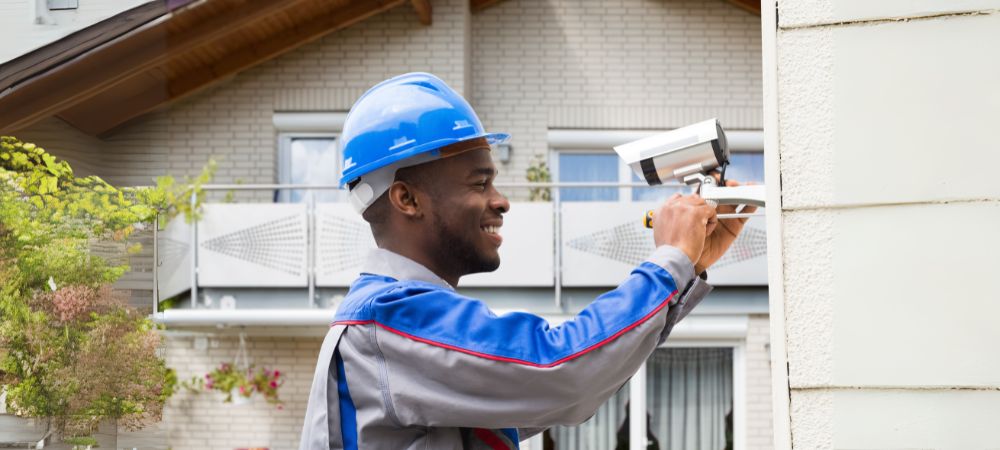
When setting up a security camera system, you can install it yourself or hire a professional.
Professional installation is usually faster and more reliable. Experts know how to set things up correctly, and the service often includes support and warranties. However, it can be costly.
DIY installation can save you money. You can customize it however you like, but it takes time and some technical skills to do it right.
Hidden Costs to Look Out For
Even after buying your cameras, extra costs might come up. Here are a few examples:
Category | What You Might Pay For? | Why does it matter? |
Wires & Cables | Extra cables for long distances | Needed to connect cameras, especially doorbell or outdoor ones |
Extra Equipment | Things like routers or extenders | Helps keep strong signals in big houses or offices |
System Integration | Making cameras work with your current setup | Some setups don’t work together without changes |
Cloud Storage | Monthly or yearly fees | If you use the cloud to save videos, there are often subscription costs |
Upgrades | New features like motion alerts | Better security but higher price |
Maintenance | Repairs or regular service | Keeps the system working properly over time |
Permits | Local permit charges | Some areas need you to get permission for cameras |
Professional Labor | Fees for complex setups | Unusual or big systems may need extra work and planning |
Over to You
Security cameras help keep your home or business safe by monitoring what’s happening around the clock. You can install them yourself or hire a professional to do it. Before starting, knowing what you need, how much you want to spend, and what kind of system works best for you is important.
Want to protect your property with a smart home security system? Check out your options at Zetronix today!
FAQs
Q: Can CCTV work without the internet?
A:It can record on local storage, like a memory card. But you won’t get live view or alerts without the internet.
Q: Is installing CCTV expensive?
A:It depends. A small, simple setup costs less, but big or smart systems cost more. Professional help also increases the price.
Q: How much does it cost to install four wired cameras?
A:It usually costs between $800 and $2,000. Prices change based on camera quality and how hard it is to install them.
Q: Do electricians install security cameras?
A: Some electricians can install wired cameras. Still, hiring security system experts is often better to get the job done right.
Q: Which is better, wired or wireless?
A:Wired systems are stronger and more stable, while wireless systems are easier to install and move. Your choice depends on what your home or building needs.
